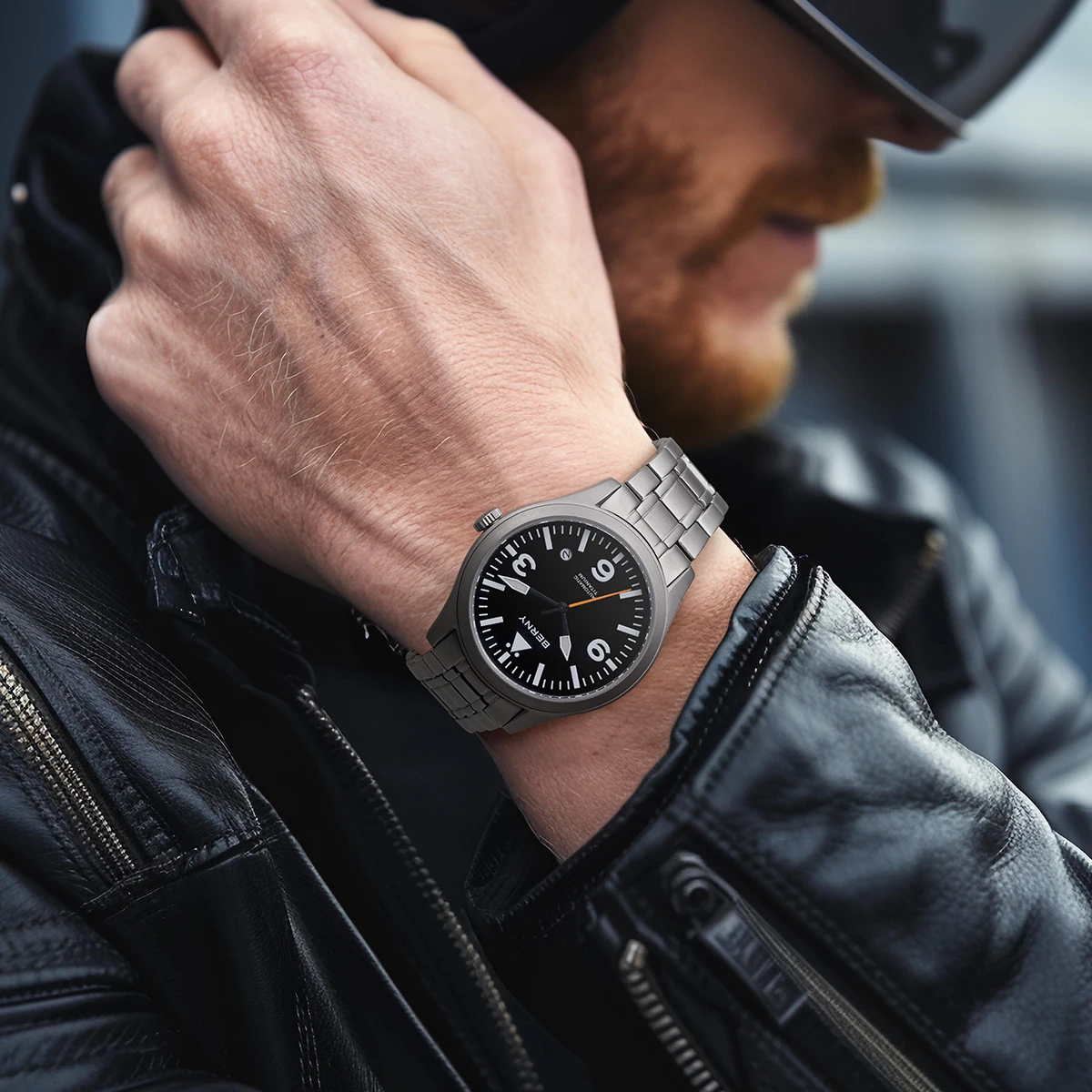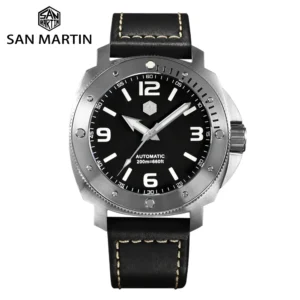Introduction: Understanding Tactical Watches in the Mechanical World
The intersection of traditional watchmaking and tactical functionality creates a compelling category of timepieces that serve beyond mere timekeeping. A tactical automatic watch combines the soul of mechanical horology with the practical durability required in demanding environments. Unlike their battery-powered counterparts, these mechanical marvels harness energy from natural movement, offering a level of operational independence that many enthusiasts and professionals find invaluable.
The growing preference for automatic movements in tactical applications stems from several key advantages. Beyond the obvious benefit of never needing a battery replacement in the field, these watches carry forward a heritage of craftsmanship that has served military and exploration purposes for generations. The mechanical heart beating inside these timepieces represents centuries of engineering refinement, resulting in mechanisms that can withstand remarkable abuse while maintaining functionality.
What truly constitutes a tactical automatic watch goes beyond marketing terminology. These timepieces integrate specific design elements focused on durability, legibility, functional utility, and reliable operation under stress. From specialized case materials and crystal protection to high-visibility dial designs and secure strap systems, every component serves a purpose in the overall tactical package.
Understanding the fundamental elements that define a tactical watch provides the foundation for making informed decisions about these specialized timepieces. Whether for professional use or enthusiast appreciation, the tactical automatic watch represents a compelling blend of tradition and practical function.
The modern tactical automatic watch draws from decades of field-proven designs while incorporating contemporary materials and engineering. Each feature incorporated into tactical wristwatches serves a specific purpose, creating timepieces that remain reliable companions in challenging conditions.
The Automatic Movement Advantage: Mechanical Resilience in Tactical Settings
Self-Powered Reliability: The No-Battery Tactical Advantage
At the heart of every automatic watch lies an ingenious self-winding mechanism that harnesses energy from the wearer’s natural motion. As the wrist moves throughout the day, a weighted rotor spins, transferring energy to the mainspring where it’s stored as potential energy. This elegant system eliminates the tactical liability of battery dependence, offering several distinct advantages:
- Complete independence from battery supplies and replacement tools
- Operational continuity in remote locations where battery procurement is impossible
- Immunity to electronic failures from electromagnetic pulse (EMP) events
- Consistent functionality across extreme temperature ranges that might compromise batteries
- Immediate operational status upon retrieval after storage
The consideration of power reserve becomes particularly relevant in tactical scenarios. Most quality automatic movements provide between 38-80 hours of operation when fully wound, sufficient for most field situations. Some modern automatic watches feature power reserve indicators, allowing users to monitor remaining energy for mission-critical timing.
Understanding how automatic movements perform in tactical applications reveals why many professionals prefer these self-sustaining systems despite the availability of electronic alternatives.
Addressing Durability Concerns: Modern Innovations in Movement Protection
A common misconception suggests automatic watches are too delicate for tactical use. In reality, modern automatic movements incorporate sophisticated protection systems specifically designed to withstand physical stress. These engineering solutions directly address the primary vulnerabilities of mechanical movements:
Shock protection systems like Incabloc, Diashock, and KIF Parechoc create spring-loaded mounting points for delicate balance wheel pivots. These systems allow components to temporarily shift during impact before returning to precise positions, preventing the catastrophic pivot breakage that would otherwise occur.
Magnetic fields present another threat to mechanical accuracy, causing hairsprings to stick together and disrupting timekeeping. Contemporary tactical automatic watches increasingly feature magnetic resistance up to 15,000 gauss through the use of silicon hairsprings and non-ferrous alloys in critical components.
Many rugged automatic watches now incorporate internal movement holders made from elastomers that absorb vibration and isolate the movement from case impacts. This additional protection layer significantly enhances durability in active use scenarios.
Automatic vs. Quartz: A Balanced Tactical Perspective
When considering movement types for tactical applications, both automatic and quartz options present valid advantages depending on specific requirements:
Automatic watches excel in scenarios requiring long-term independence from power sources, protection from electronic interference, and operation in extreme temperature ranges. The absence of battery changes makes them particularly valuable for extended deployments or remote operations. However, they typically offer accuracy within 5-15 seconds per day and require regular movement to maintain power.
Quartz watches provide superior immediate accuracy (typically 15-30 seconds per month), lighter weight, and generally lower cost. Their simpler construction makes them theoretically less susceptible to extreme shock damage. However, they remain dependent on battery changes, potentially introducing a critical failure point in extended field operations.
The ideal choice ultimately depends on specific operational requirements, personal preferences, and the particular watch models being considered. Many professionals maintain both types in their equipment rotation, selecting based on mission parameters and conditions.
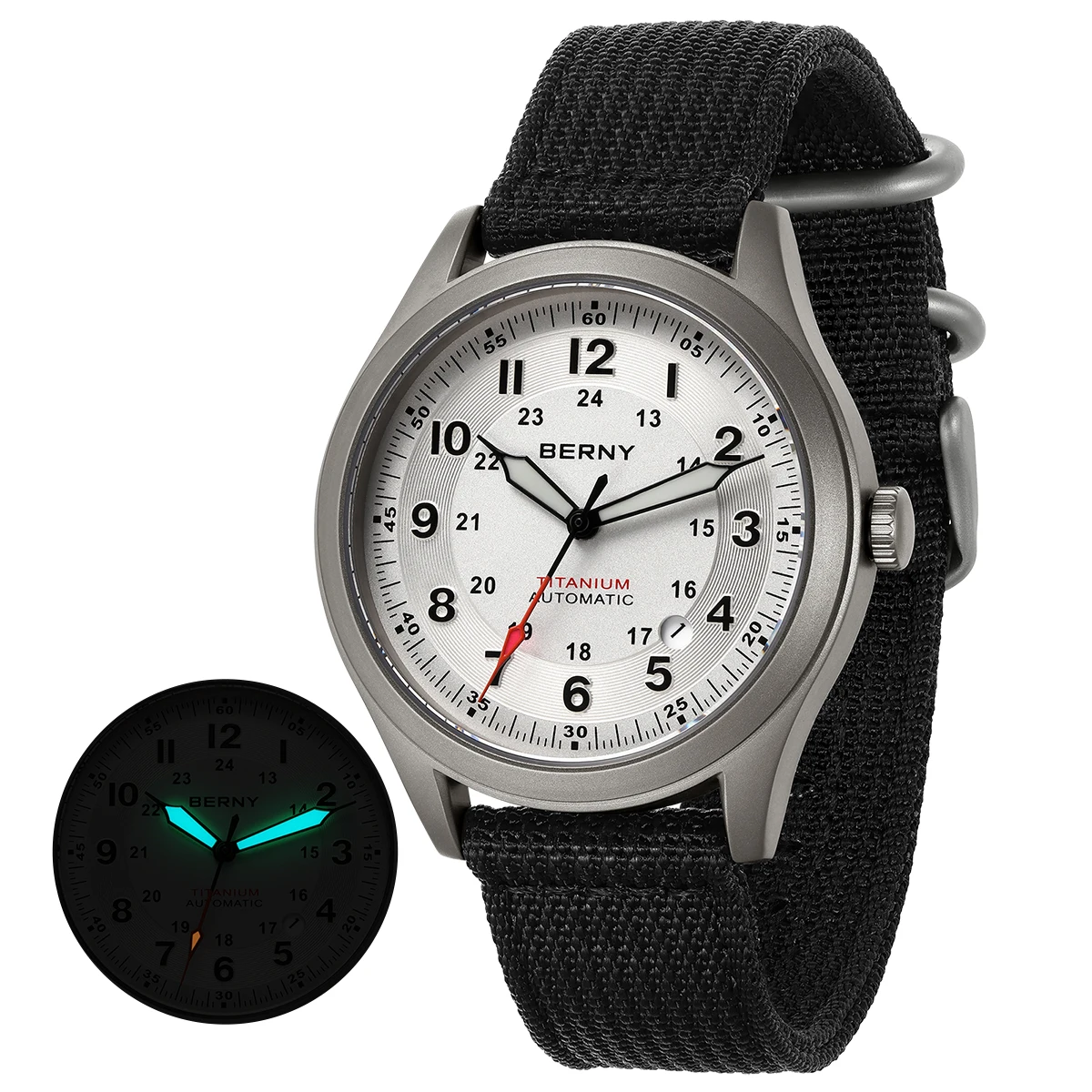
The practical performance of field-tested automatic watch designs often surprises those accustomed to thinking of mechanical watches as delicate accessories rather than functional tools. When properly engineered, these timepieces demonstrate remarkable resilience in challenging conditions.
Essential Tactical Elements: The Building Blocks of a Robust Timepiece
Case Construction & Material Science: The Protective Shell
The case serves as the primary protective structure for a tactical automatic watch, making its design and material selection crucial for operational reliability. Each material option presents distinct advantages and limitations:
Stainless Steel remains the most common case material for tactical watches due to its excellent balance of properties:
* 316L grade offers superior corrosion resistance, particularly in marine environments
* 904L grade (less common) provides enhanced chemical resistance and slightly improved corrosion protection
* Benefits include excellent impact resistance, good scratch resistance, and cost-effective production
* Limitations include relatively high weight and potential for magnetic interference
Titanium has gained significant popularity in premium tactical watches:
* Grade 2 titanium offers excellent strength-to-weight ratio (approximately 40% lighter than steel)
* Grade 5 titanium (with aluminum and vanadium) provides superior strength but higher cost
* Natural corrosion resistance exceeds even specialized stainless steels
* Limitations include lower scratch resistance than steel and more difficult machining processes
Specialized Materials appear in cutting-edge tactical designs:
* Carbon fiber composites offer extraordinary strength-to-weight advantages and natural vibration damping
* Ceramic components provide nearly unscratchable surfaces but may be more brittle under impact
* DLC (Diamond-Like Carbon) coatings significantly improve surface hardness and scratch resistance
Beyond material selection, case geometry dramatically impacts tactical functionality. Features like recessed crowns with protective guards, robust lug designs, and appropriate case thickness create a balanced profile that resists snagging while protecting vulnerable components. Surface treatments like PVD (Physical Vapor Deposition) and DLC coatings not only reduce reflectivity but also improve durability.
Crystal selection represents another critical tactical consideration. Sapphire crystal (measuring 9 on the Mohs hardness scale) offers nearly unscratchable performance but requires proper mounting to address its relative brittleness. Quality mineral crystals provide a cost-effective alternative with good impact resistance but lower scratch protection.
Mastering the principles of case protection ensures your timepiece can withstand the physical demands of active use. For those prioritizing weight reduction, titanium automatic watches offer an excellent balance of strength and comfort.
Legibility & Illumination: Critical Information Access
A tactical watch fails at its primary purpose if it cannot be read quickly and accurately under all conditions. Optimal tactical dial design adheres to several key principles:
- High contrast between hands, markers, and dial background
- Minimalist approach that eliminates non-essential information
- Clear differentiation between hour, minute and seconds indicators
- Intuitive information hierarchy that prioritizes critical data
Luminous technology plays a crucial role in tactical watch functionality, with two primary systems dominating the market:
Super-LumiNova and similar photoluminescent compounds:
* Require “charging” through exposure to light
* Provide extremely bright initial illumination that gradually diminishes
* Available in different grades with varying brightness and duration characteristics
* Completely non-radioactive and maintenance-free
* Generally lasts 8-10 hours with diminishing brightness
Tritium Gas Tubes:
* Self-illuminating through low-level radiation contained within sealed glass tubes
* Provide consistent illumination without requiring “charging”
* Maintain steady brightness for approximately 12-15 years before gradually dimming
* Lower initial brightness than Super-LumiNova but superior longevity
* Ideal for scenarios requiring consistent readability throughout prolonged nighttime operations
The physical design of hands significantly impacts readability under stress. Optimal tactical hands feature distinct shapes for hour and minute indicators, sufficient surface area for luminous material, and high contrast against the dial background. The seconds hand often incorporates a different color to avoid confusion during precise timing operations.
Anti-reflective coatings on crystals represent another crucial tactical element, reducing glare that might compromise stealth or impair readability in bright conditions. Quality tactical watches typically feature multi-layer anti-reflective treatments on the underside of the crystal, with some models adding exterior coatings despite their potential vulnerability to wear.
Understanding the science behind luminosity in tactical automatic watches helps users select timepieces appropriate for their specific operational requirements. The principles of optimizing tactical watch dial layouts balance aesthetic considerations with practical functionality for maximum effectiveness.
Water & Environmental Resistance: Protection Against the Elements
Water resistance represents a fundamental requirement for tactical timepieces, yet many users misunderstand the ratings and their practical implications:
| Rating | Pressure Resistance | Actual Water Capability |
|---|---|---|
| 30m/3ATM | 3 bar | Splash resistant only, not suitable for swimming |
| 50m/5ATM | 5 bar | Brief swimming, light water exposure |
| 100m/10ATM | 10 bar | Recreational swimming and snorkeling |
| 200m/20ATM | 20 bar | Recreational diving, professional marine use |
| 300m+/30ATM+ | 30+ bar | Technical diving, professional underwater operations |
True tactical watches typically feature water resistance of at least 100m/10ATM, with many professional models exceeding 200m/20ATM. This capability depends on sophisticated gasket systems that create multiple barriers against water intrusion. Quality tactical watches utilize specialized synthetic gaskets at all potential entry points, including the crystal, case back, crown, and pushers.
Crown design significantly impacts water integrity, with screw-down crowns providing superior protection compared to push-pull variants. Advanced designs incorporate additional sealing mechanisms like crown tubes with multiple O-rings and interior crown gaskets that compress when tightened.
Beyond water protection, tactical watches must withstand temperature extremes that affect lubricants, materials expansion rates, and gasket elasticity. Premium models undergo testing across temperature ranges from -40°C to +60°C (-40°F to +140°F) to ensure consistent performance in diverse environments. Specialized condensation prevention technologies, including moisture-absorbing capsules within the case, help maintain clarity even during rapid temperature transitions.
For activities requiring exceptional environmental sealing, professional-spec dive watches offer the robust construction needed to withstand extreme conditions both underwater and on land.
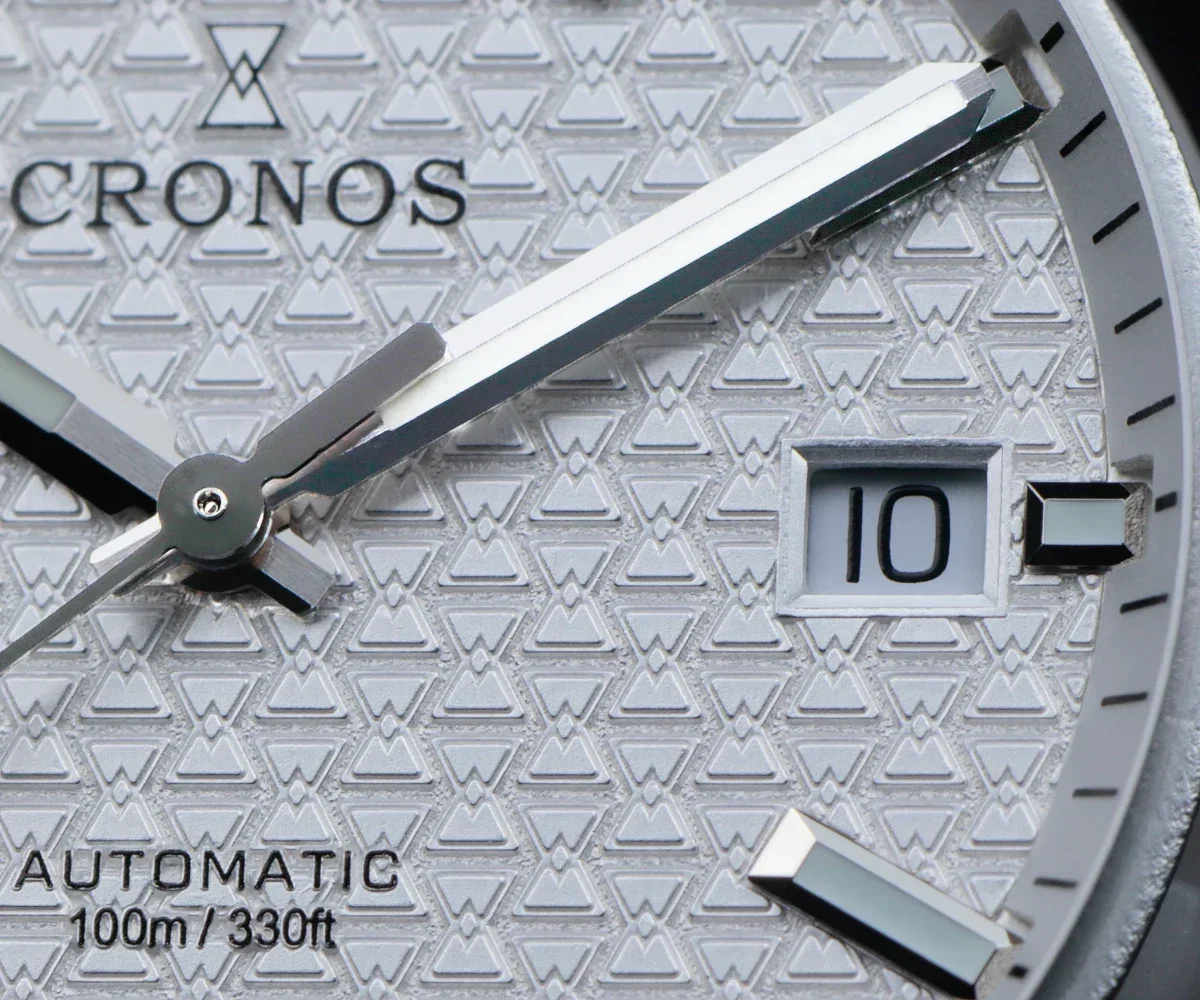
Ergonomics & Secure Attachment: The Wearability Factor
Even the most technically impressive tactical watch becomes worthless if it cannot be comfortably and securely worn during active use. Strap and bracelet options present significant tactical implications:
NATO/ZULU Straps:
* Provide fail-safe design that retains the watch even if a spring bar fails
* Utilize durable nylon webbing that resists tearing, water damage, and UV degradation
* Offer quick drying characteristics ideal for amphibious operations
* Allow infinite adjustment for precise fitting over equipment or changing conditions
* Limitation: potential for water retention between strap and wrist
Rubber/Silicone Straps:
* Provide excellent water resistance and quick-drying properties
* Resist degradation from saltwater, chemicals, and UV exposure
* Offer superior comfort in hot weather and high-humidity environments
* Feature high tensile strength resistant to tearing and cutting
* Limitation: potential for irritation during extended wear in some individuals
Metal Bracelets:
* Provide maximum durability and longest service life
* Offer superior distribution of weight around the wrist
* Feature secure clasps with redundant locking mechanisms
* Supply integrated extension systems for use over equipment in some models
* Limitation: relatively higher weight and noise signature
Specialized Options:
* Quick-release spring bars allow rapid strap changes without tools
* Integrated attachment systems eliminate vulnerable spring bars entirely
* Elastomer “accordion” sections accommodate compression during diving
* Hook-and-loop fasteners enable precise adjustment in the field
Case dimensioning significantly impacts tactical utility. While personal preference and wrist size influence optimal dimensions, most tactical automatic watches feature:
* Diameters between 39-44mm balancing visibility and wearability
* Thickness proportional to case diameter (typically 12-15mm)
* Lug-to-lug measurements appropriate for the intended wrist size
* Weight distribution that minimizes momentum during active movement
For field applications requiring robust durability with optimal comfort, automatic field military watches have evolved specifically to balance tactical requirements with all-day wearability.
Movement Specifications: Selecting a Robust Automatic Caliber
Identifying Robust Automatic Calibers
Not all automatic movements offer equal durability in tactical applications. Several key characteristics define “workhorse” calibers suited for demanding use:
- Simplified architecture with fewer complications reduces potential failure points
- Robust construction prioritizing durability over extreme finishing or thinness
- Proven design heritage with extensive field testing and refinement
- Wide parts availability ensuring long-term serviceability
- Moderate frequency (typically 21,600-28,800 vibrations per hour) balancing precision with reduced wear
Several movement families have established reputations for exceptional reliability in field conditions. The Seiko NH35/36 series demonstrates excellent shock resistance with simplified construction that withstands abuse. The ETA 2824-2 and its derivatives (including the Sellita SW200-1) represent the Swiss standard for robust field performance with decades of refinement. The Miyota 9015 offers a higher-beat alternative with excellent reliability statistics.
For tactical applications, movement complexity should align with actual operational requirements. While complications like chronographs and GMTs provide useful functionality, each additional feature introduces potential vulnerability. The most reliable tactical watches often feature simple three-hand designs with perhaps a date function, prioritizing unfailing timekeeping over additional capabilities.
Expected accuracy for quality automatic movements typically ranges from +/-5 seconds per day in higher-grade calibers to +/-15 seconds per day in standard versions. While chronometer certification (typically +/-4 seconds per day) offers impressive precision, the extreme reliability of simpler movements often proves more valuable in tactical scenarios than ultimate accuracy.
For timepieces emphasizing movement durability, rugged automatic watches feature calibers specifically selected and tested for resilience in challenging conditions.
Movement Features for Tactical Application
Beyond the base caliber selection, several specific movement features directly enhance tactical reliability:
Shock Protection Systems serve as the primary defense against impact damage. Modern automatic watches typically incorporate jeweled systems where specialized spring assemblies allow the delicate balance staff pivots to displace temporarily during impact, then return to their proper position. Advanced systems like Incabloc, Diashock, and KIF Parechoc use different engineering approaches but serve the same crucial function of preventing catastrophic pivot breakage during hard impacts.
Anti-Magnetic Protection has become increasingly important in environments filled with electronic equipment. Standard automatic movements can be affected by magnetic fields as low as 60 gauss, while enhanced designs can resist 1,000+ gauss through the use of:
* Silicon hairsprings that remain unaffected by magnetism
* Specialized alloys for escape wheels and other critical components
* Soft-iron inner cases that redirect magnetic fields around the movement
Power Reserve Duration directly impacts tactical utility, determining how long the watch will run without movement. Standard automatic calibers typically provide 38-42 hours of power reserve, while enhanced designs may offer 70+ hours. Extended power reserve proves particularly valuable for timepieces that might not be worn continuously during multi-day operations.
Winding Efficiency affects how quickly the movement builds and maintains power reserve. Quality tactical automatics feature efficient bidirectional winding systems that maximize energy capture from minimal wrist movement. This ensures reliable operation even during periods of limited activity.
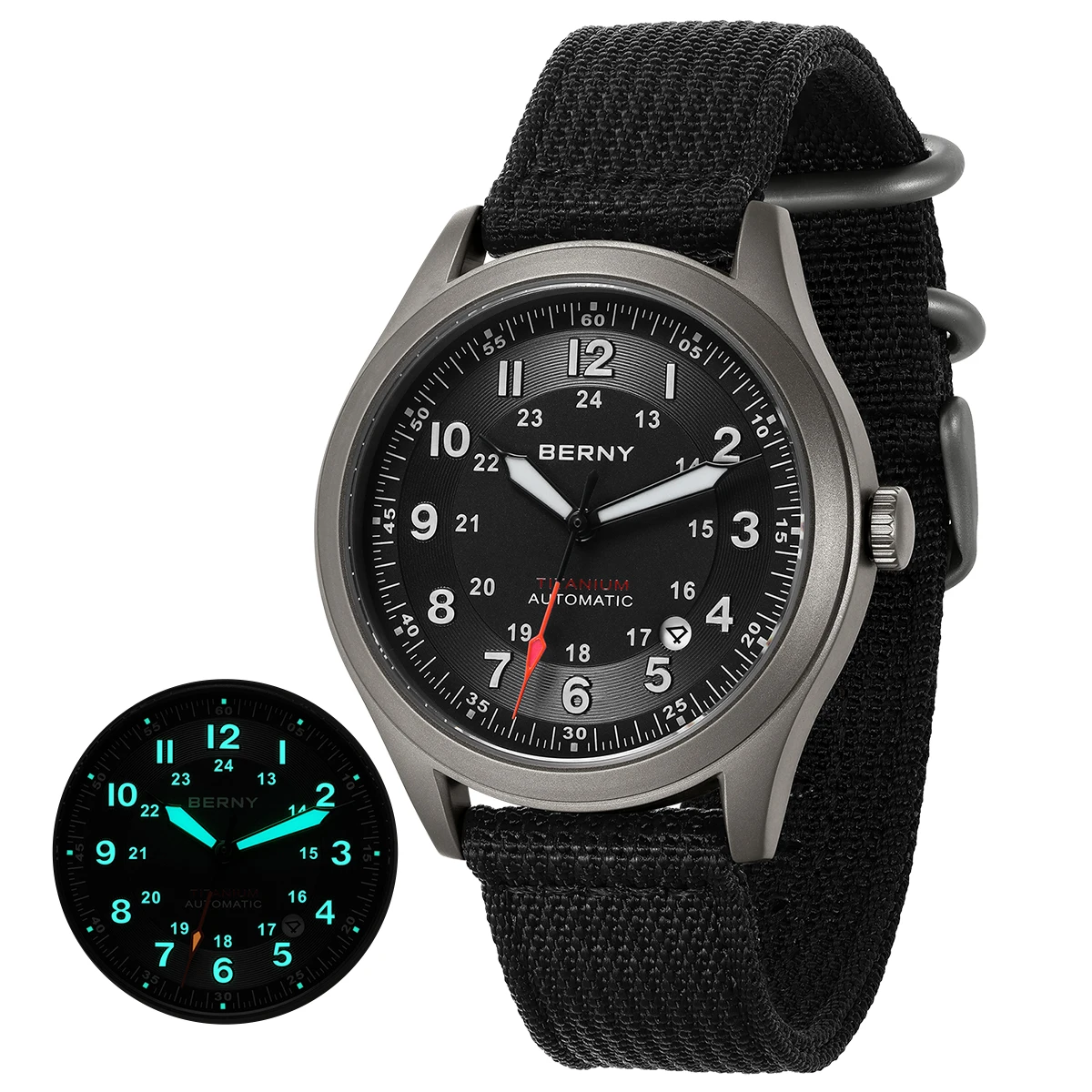
Maintenance Considerations for Field Reliability
The longevity of an automatic movement in tactical use depends significantly on proper maintenance protocols. Unlike quartz watches that may run unattended for years, automatic movements require periodic care to ensure reliability:
Standard service intervals for quality automatic movements typically range from 5-7 years, though harsh operating conditions may necessitate more frequent attention. During servicing, the movement is disassembled, cleaned, re-lubricated, and regulated—processes essential for maintaining optimal performance.
Between formal services, several practices enhance field reliability:
* Regular winding if the watch remains unworn for extended periods
* Proper setting procedures, particularly avoiding date adjustments during the danger zone (typically between 9PM and 3AM) when date mechanisms are engaged
* Appropriate crown manipulation, ensuring full tightening of screw-down crowns
* Basic external cleaning to prevent contaminant intrusion
Many tactical professionals rotate between several timepieces, allowing each to receive proper maintenance without creating operational gaps. This approach ensures continuous availability of reliable timepieces while extending the service life of the entire collection.
The specific maintenance requirements for tactical automatic watches differ from those of dress watches or digital timepieces, requiring an understanding of mechanical principles to ensure optimal performance.
Functional Complications: Tactical Utility Beyond Time-Telling
Essential Timing Functions
Beyond basic timekeeping, several complications offer significant tactical utility when properly implemented:
Rotating Bezels provide the most common and useful tactical timing function. Unidirectional bezels (rotating only counterclockwise) serve primarily as safety devices for dive timing, ensuring that any accidental movement only makes the indicated remaining time shorter—a potentially life-saving feature underwater. Quality tactical dive bezels feature:
* Precise 120-click action preventing accidental movement
* Clear minute markings for accurate interval timing
* Luminous zero markers for nighttime reference
* Ceramic or sapphire inserts resisting scratches and fading
Bidirectional 12-hour bezels offer different tactical benefits, enabling rudimentary tracking of second time zones by rotating the bezel to align with a specific offset. This functionality proves particularly valuable for coordinating operations across time zones or maintaining awareness of home base time during deployments.
Specialized compass bezels integrate cardinal direction markings, allowing for basic navigation when used in conjunction with the sun. While not replacing dedicated navigation tools, this capability provides valuable redundancy in emergency situations.
The physical construction of the bezel mechanism significantly impacts field utility. Quality tactical bezels feature precisely engineered click mechanisms with appropriate resistance to prevent accidental movement while remaining operable with gloved hands. The edge design typically incorporates deep grooves or scalloping that provides secure grip even when wet or muddy.
For professionals requiring dual time zone tracking, GMT automatic watches incorporate dedicated mechanisms for simultaneous tracking of multiple time zones with greater precision than bezel-based solutions.
Date & Calendar Functions: Tactical Orientation
While seemingly mundane, date functions provide crucial tactical utility beyond simple convenience. In operational environments, maintaining temporal awareness becomes increasingly difficult as routine schedules dissolve. A quick-reference date display helps maintain orientation within longer mission timeframes and facilitates accurate documentation for reporting and planning purposes.
The implementation of date functions varies significantly in tactical watches:
* Standard date windows typically position at 3 or 6 o’clock for balanced dial aesthetics
* Magnified date windows enhance readability under stress and in poor lighting
* Color-contrasting date wheels improve at-a-glance visibility
* Double-date displays showing both date and day provide enhanced temporal orientation
The functionality of date mechanisms also affects tactical utility. Quality movements incorporate quickset features allowing rapid date adjustment without cycling the entire 24-hour period. This capability proves particularly valuable when crossing date lines during travel or when the watch has remained unwound beyond its power reserve.
GMT & Multiple Time Zone Tracking
For operations spanning multiple time zones, dedicated GMT functionality provides significant tactical advantages. Unlike simple bezel-based tracking, true GMT mechanisms incorporate additional hands that complete one rotation per 24 hours, eliminating AM/PM ambiguity and providing more precise time zone tracking.
Implementation approaches include:
* Traditional GMT with 24-hour hand reference against fixed bezel
* True GMT/Travel GMT with independently adjustable hour hand
* Dual-time systems with separate subdials for secondary time zones
The practical applications extend beyond simple convenience to critical operational functions:
* Coordinating communications between field units and command centers
* Tracking mission timing across international deployments
* Maintaining awareness of appropriate communication windows with different regions
* Planning operations spanning multiple time zones
For maritime applications requiring both time zone tracking and underwater capability, specialized GMT dive watches combine these functions within a single rugged platform.
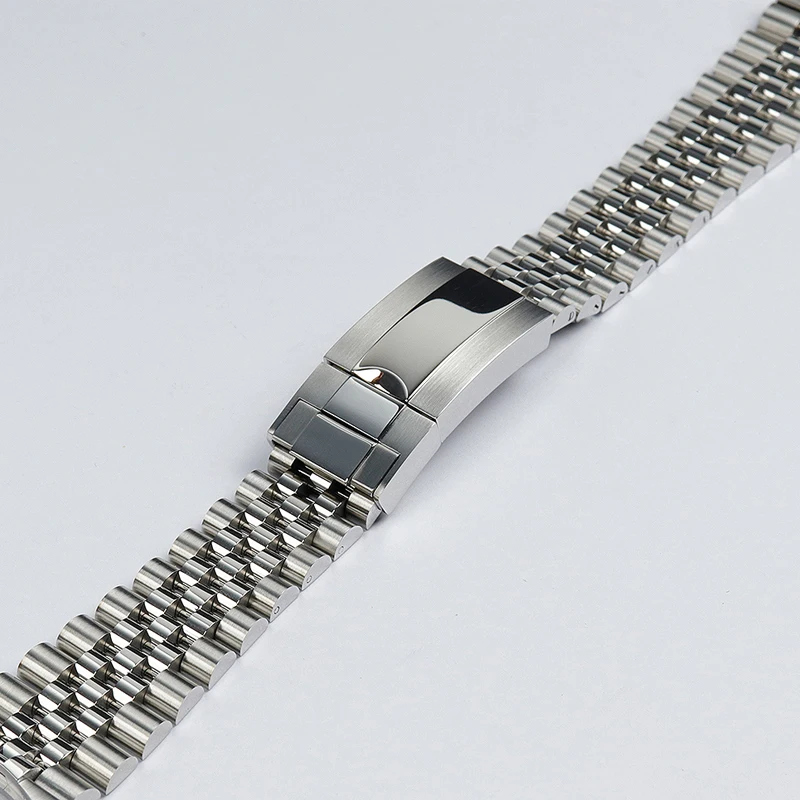
Selecting Your Tactical Automatic Watch: A Decision Framework
Defining Your Mission Parameters
Selecting the ideal tactical automatic watch begins with a clear assessment of your specific operational needs and environmental conditions:
What specific environments will you regularly encounter?
* Marine/underwater exposure dictates water resistance ratings and corrosion-resistant materials
* Desert conditions suggest dust sealing, heat resistance, and reflectivity considerations
* Arctic environments require cold-temperature testing and easy operation with gloved hands
* Urban settings might prioritize subdued appearance and versatile styling
What primary activities will the watch support?
* Navigation requirements suggest compass functionality or robust bezel markers
* Timing-critical operations benefit from high-contrast chronograph functions
* Night operations demand exceptional luminous performance
* Multi-day missions require extended power reserve or exceptional accuracy
What practical constraints must be accommodated?
* Wrist size and shape significantly impact comfortable case dimensions
* Uniform requirements may dictate specific colors or reflectivity limitations
* Equipment integration might necessitate specific strap types or dimensions
* Operational noise concerns could eliminate metal bracelets from consideration
By systematically addressing these questions, you create a specific requirement profile that significantly narrows the field of appropriate options. This approach ensures your selection addresses actual needs rather than simply accumulating features that might prove unnecessary or even detrimental in practical use.
For specialized environments presenting extreme challenges, understanding military watch features engineered for extreme conditions helps identify the specific attributes most relevant to your requirements.
Balancing Quality and Investment
Tactical automatic watches span a broad price spectrum, with meaningful quality distinctions at different price points:
Entry-level tactical automatics ($250-$500) typically feature:
* Reliable workhorse movements like Seiko NH35 or Miyota 8215
* Mineral crystals or entry-level sapphire
* 316L stainless steel construction
* Basic water resistance (100-200m)
* Acceptable but not exceptional luminous performance
Mid-range options ($500-$1,500) generally offer:
* Higher-grade movements with better finishing and regulation
* Sapphire crystals with quality AR coating
* Enhanced case hardening or premium materials like titanium
* Superior gasket systems and 200m+ water resistance
* Extended warranty coverage and better customer support
Premium tactical automatics ($1,500+) typically provide:
* Chronometer-grade or specially modified movements
* Multi-layer anti-reflective coatings on sapphire crystal
* Specialized case materials or surface treatments
* Professional-grade water resistance (300m+)
* Enhanced shock protection and anti-magnetic properties
The long-term ownership costs extend beyond the initial purchase price to include:
* Regular servicing (typically $200-$500 every 5-7 years)
* Strap replacement as materials wear
* Potential crystal replacement if damage occurs
* Shipping costs for service from specialized centers
When allocating your budget, prioritize fundamental quality elements that directly impact reliability: movement quality, case construction, water resistance, and crystal material. These core components determine whether the watch will perform its essential functions under stress. Secondary considerations like dial aesthetics, brand prestige, and packaging represent areas where compromise has less functional impact.
For those seeking quality tactical timepieces across various price points, military-inspired automatic watches offer design elements proven through field use at different investment levels.
Military Inspired Automatic Watches, Rugged Automatic Watches, Tactical Automatic Watches
Price range: $852.14 through $994.60 Select options This product has multiple variants. The options may be chosen on the product pageClassic Automatic Dress Watches, Day Date Automatic Watches, Perpetual Calendar Automatic Watches
Price range: $540.60 through $574.60 Select options This product has multiple variants. The options may be chosen on the product pageAutomatic Chronograph Watches, Chronograph Pilot Watches
Price range: $233.36 through $237.58 Select options This product has multiple variants. The options may be chosen on the product pageClassic Automatic Dress Watches, GMT Automatic Watches, GMT Pilot Watches
Price range: $1,240.86 through $1,463.33 Select options This product has multiple variants. The options may be chosen on the product pageAutomatic Chronograph Watches, Classic Style Dive Watches
$3,053.06 Select options This product has multiple variants. The options may be chosen on the product pageAutomatic Skeleton Watches, Open Heart Automatic Watches
$98.36 Select options This product has multiple variants. The options may be chosen on the product page
Evaluating Brand Heritage and Field Reputation
Beyond specifications and features, brand heritage and field reputation provide valuable insights into likely performance under stress. Several categories of manufacturers bring different strengths to tactical watchmaking:
Traditional military suppliers have developed watches specifically for armed forces requirements, often through direct contracts resulting in designs tested under actual field conditions. These brands typically emphasize pure functionality over marketing considerations, focusing on specifications that directly enhance reliability.
Technical innovation specialists approach tactical design from an engineering perspective, incorporating advanced materials and construction techniques that push performance boundaries. These manufacturers often introduce features that eventually become industry standards after proving their value in challenging applications.
Heritage military brands build upon historical designs that demonstrated exceptional reliability in past conflicts. While modernized with contemporary materials and movements, these watches maintain design languages proven effective through decades of field use.
When researching potential options, look beyond marketing claims to substantiate real-world performance:
* Specific military unit adoption provides meaningful validation
* Professional user communities often share candid feedback on reliability
* Long-term testing reviews reveal issues that might not appear during initial evaluations
* Warranty policies and service support indicate manufacturer confidence in product durability
The reputation for building rugged watch cases designed for outdoor adventures demonstrates a brand’s understanding of the actual conditions their timepieces must withstand, beyond simply creating aggressive aesthetic styling.
Beyond the Basics: Advanced Tactical Considerations
Is a Mechanical Watch Still Relevant in a Digital Age?
In an era of GPS navigation, smartphone ubiquity, and dedicated digital tactical tools, the continued relevance of mechanical timepieces deserves thoughtful consideration. Several factors explain their enduring presence on the wrists of military, law enforcement, and outdoor professionals:
Operational independence from electronic infrastructure provides significant tactical advantage. Mechanical watches continue functioning during power outages, after EMP events, and in remote areas where battery replacement becomes impossible. This independence creates a reliable backstop when primary electronic systems fail.
Redundancy principles underlie many tactical equipment choices. Just as professionals carry backup lighting, communications, and navigation tools, the automatic watch serves as a redundant timing system operating on entirely different principles than electronic alternatives. This diversity of systems enhances overall mission reliability.
The psychological impact of mechanical reliability should not be underestimated. The visible operation of a purely mechanical system—continuing to function through harsh conditions without external power—provides tangible reassurance when other systems fail. This psychological comfort becomes particularly valuable in stressful situations where confidence in equipment directly impacts decision-making quality.
While not replacing dedicated navigation tools, timing devices, or digital communications, the automatic tactical watch provides a foundation of basic functionality that requires no charging, emits no signals, and continues operating with minimal user attention—qualities that maintain its relevance despite technological advancement.
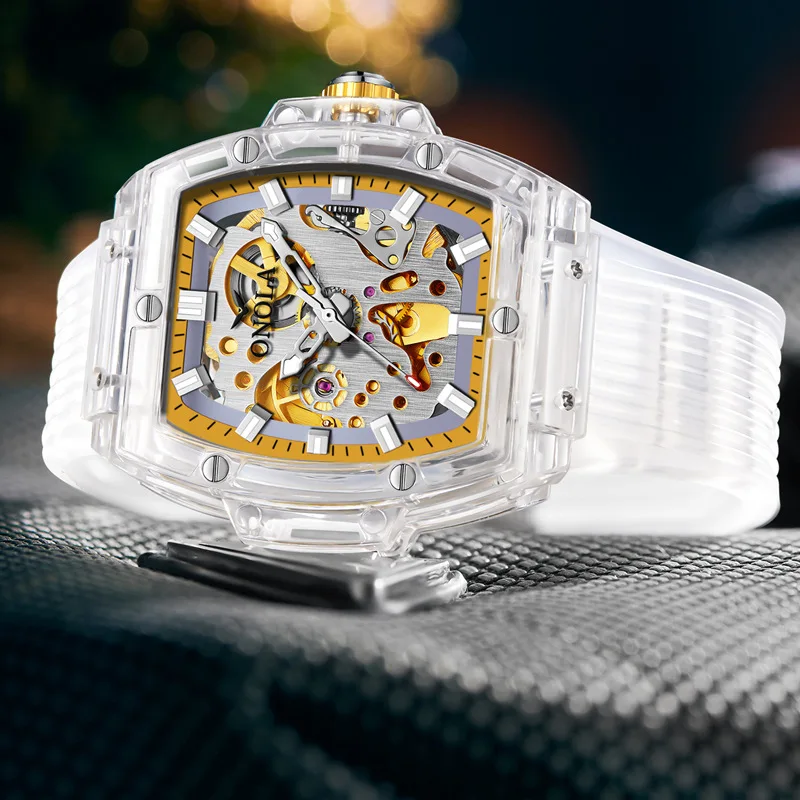
Understanding the evolution of military field watches reveals how these timepieces have adapted to changing battlefield conditions while maintaining core principles of reliability and functionality.
Customization and Personalization: Tailoring to Your Needs
The modular nature of watch construction allows for significant customization to address specific tactical requirements:
Strap options represent the most accessible customization path, with endless variations in material, construction, and attachment methods. Beyond standard NATO, rubber, and bracelet options, specialized tactical straps incorporate features like:
* Quick-release spring bars for rapid changes without tools
* Silent Velcro closures for stealth operations
* Integrated compass or small tool storage
* Survival cordage integrated into construction
Physical watch modification requires more consideration to maintain integrity. When customizing tactical watches:
* Maintain water resistance by ensuring proper gasket installation after any case opening
* Verify that replacement hands and dials maintain or enhance original luminous performance
* Consider how bezel replacements might affect grip and operability with gloves
* Ensure any movement modifications are performed by qualified technicians
The balance between personalization and reliability requires thoughtful assessment of how modifications might impact core functionality. Subtle customizations that enhance usability without compromising integrity generally provide better long-term results than radical changes that might introduce unforeseen vulnerabilities.
The Future of Tactical Automatic Watches
The tactical automatic watch continues to evolve through material science advances and changing operational requirements:
Emerging case materials like carbon composites, ceramic-metal hybrids, and specialized alloys offer improved strength-to-weight ratios while maintaining or enhancing shock resistance. These developments allow for more comfortable extended wear without sacrificing protection.
Movement technology continues advancing with silicon components, improved mainspring alloys, and enhanced shock protection systems. These innovations address the traditional limitations of mechanical movements while preserving their fundamental independence from external power sources.
The integration of traditional watchmaking with modern tactical requirements has driven innovative approaches to luminous technology, crystal design, and sealing systems. Rather than replacing mechanical watches, these advances have reinforced their position as reliable tools for serious use.
The tactical automatic watch market increasingly emphasizes sustainability through serviceable construction, responsible material sourcing, and designs intended for multigenerational use. This focus aligns with broader tactical equipment trends emphasizing quality items with extended service lives over disposable alternatives.
Sharp Aspect’s collection of automatic watches showcases how contemporary watchmaking balances tradition and innovation to create timepieces suited for modern tactical requirements.
Making Your Decision: Final Considerations
The ideal tactical automatic watch emerges from thoughtful consideration of the elements discussed throughout this guide. From case construction and movement selection to functional features and ergonomic considerations, each component contributes to a cohesive whole that exceeds the sum of its parts.
The durability foundation begins with appropriate materials and construction techniques. A properly engineered case protecting a robust movement creates the core platform upon which all other features depend. This foundation must withstand the physical stresses of your intended use while maintaining water and environmental resistance appropriate to your operational environment.
Functional elements should align with actual needs rather than accumulated specifications. A simpler watch that performs reliably under stress often proves more valuable than a feature-laden alternative that introduces unnecessary complexity. Consider which complications truly enhance your capabilities and which merely add potential failure points.
The psychological satisfaction of owning a mechanical timepiece engineered for demanding conditions extends beyond practical functionality. These watches connect users to a heritage of exploration, military service, and adventure spanning generations. The knowledge that similar timepieces have performed reliably in conditions far worse than most will ever encounter provides confidence that transcends specifications.
Your chosen tactical automatic watch should ultimately serve as a reliable partner in whatever challenges you face. Whether navigating urban environments or remote wilderness, timing critical events, or simply maintaining temporal awareness under stress, the right timepiece becomes an extension of your capabilities rather than simply an accessory.
For those seeking proven designs with tactical heritage, classic field watches demonstrate how traditional principles continue to serve modern requirements through thoughtful evolution and material enhancement.

